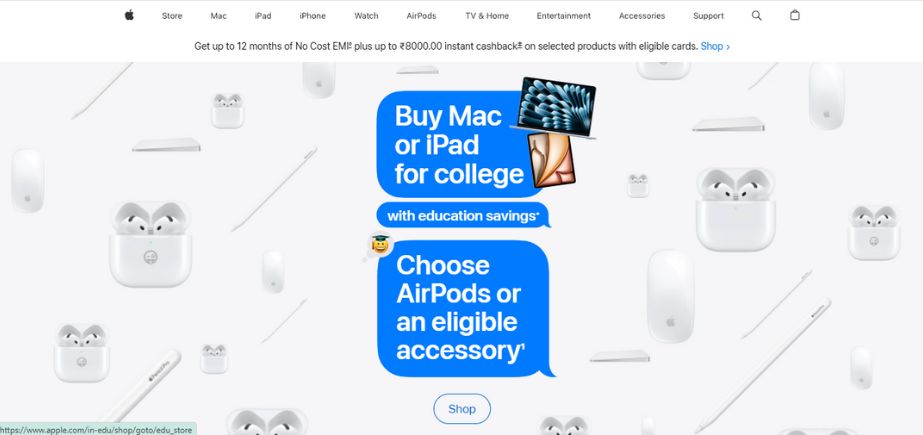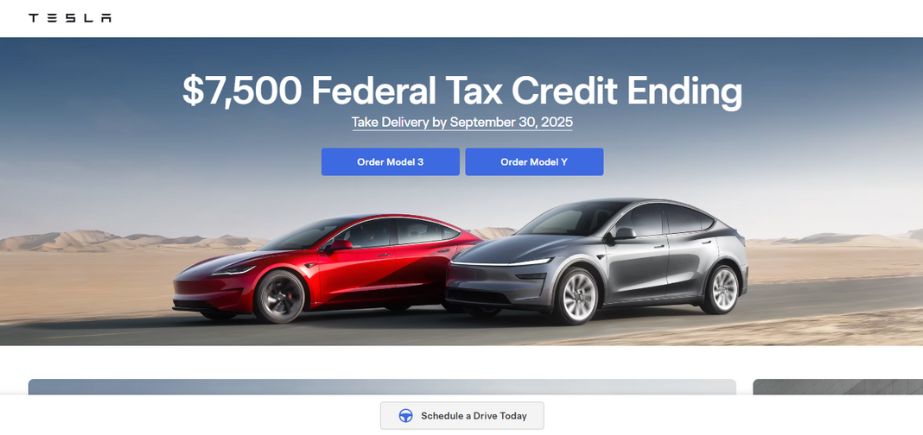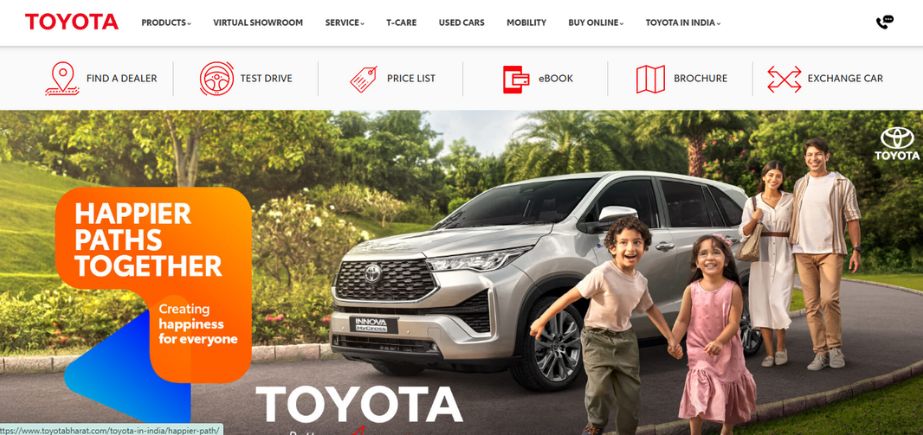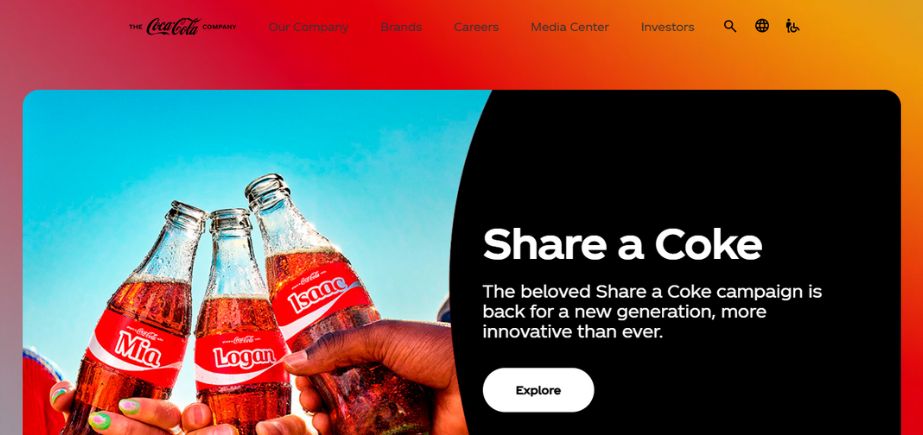The concept of strategic planning has continued to gain much importance for businesses that are venturing in the current complex business environment. The SWOT analysis framework is one of the most efficient organizational position evaluation tools and competitive strategies development tools. This detailed approach enables firms to evaluate their capacities in the process of analyzing the external factors in the market that may be affecting their success in the future.
The advantage of SWOT analysis is the fact that it is very simple and can be used by any industry and any business size. Multinational corporations, all the way down to small start-ups, depend on this strategic tool across the world to make educated decisions regarding the correct use of the resource, the market they are in, and the avenues of growth. An insight into the real SWOT Analysis Examples used by top corporations will help business people to make the best use of this framework.
What is a SWOT Analysis?
Swot analysis is a tool of strategic planning that examines the four main factors of an organization, which include strengths, weaknesses, opportunities, and threats of an organization. This framework gives a profile of how the internal and external forces that affect the performance of a business ought to be analysed. SWOT stands for these four very key elements which make up the basis of any strategic decision-making processes.
Strengths or weaknesses are those factors that an organization can manipulate, such as resources, capabilities, processes, and competitive advantages. For instance, evaluating your organisation’s readiness for a structured product innovation process can highlight internal strengths (innovation culture, R&D capacity) or weaknesses (lack of workflows or skills). Opportunities and threats refer to the external environment this could be market trends, regulatory changes, market economic conditions, and the dynamics of the competitive market. Through a thorough analysis of such factors, organizations are able to find their weak spots and establish strategies to exploit their strengths and overcome the possible pitfalls.
10 Real SWOT Analysis Examples by Industry
A. Technology Companies (3 Examples)
Apple Inc.

Apple is one of the most valuable firms in the world, known for innovative products and a high brand status. The company has proven over time its capability to come up with groundbreaking products that transform whole industries, be it in personal computers, smartphones, and wearable technology. The company has been successful because of its ability to integrate modern technology, sleek design, and effective marketing techniques to develop a high degree of customer loyalty as well as brand promotion.
This business model of the company is dedicated to developing an ecosystem consisting of an integrated software, hardware, and services to work coherently. The strategy has helped Apple to realize high prices and a high profit margin. Brand immersive Apple stores (both physical and online) are an important element of the retail strategy that contributes to the high-end status of the company. Apple is known in the tech market.
Strengths:
- Brand loyalty and premium brand positioning
- Innovation capabilities and R&D investment
- Integrated ecosystem of products and services
- Strong financial performance and cash reserves
- Effective marketing and retail presence
Weaknesses:
- High pricing strategy limits market penetration
- Limited customization options for consumers
- Dependency on iPhone revenue for the majority of profits
- Closed ecosystem approach restricts flexibility
- Manufacturing concentration in specific regions
Opportunities:
- Emerging markets’ expansion potential
- New product categories and innovations
- Services revenue growth opportunities
- Augmented reality and virtual reality development
- Healthcare and wellness technology advancement
Threats:
- Intense competition from Android manufacturers
- Supply chain disruptions and component shortages
- Regulatory scrutiny and antitrust concerns
- Economic downturns affect consumer spending
- Technology commoditization is reducing differentiation
Amazon

Amazon is no longer an online bookstore, but the global e-commerce platforms and cloud computing company, which has also redefined the way that people shop and business is run. The secret to the success of the company is its customer-oriented approach, the excellence of operations, and continuous innovation in various business segments. The Amazon platform also links millions of sellers with billions of customers globally, which gives a huge opportunity to create a good marketplace with a huge revenue stream.
This diversification strategy has enabled the company to have several sources of its revenues, such as e-commerce, cloud services (AWS), advertising, subscription services, and entertainment content. This competitive advantage has been developed through investments in the logistics infrastructure, such as delivery networks and fulfillment centers, which Amazon has built and cannot be easily matched by its competitors. Such grasping of the business development enlightens the intricacy of the contemporary corporation strategies that may be ascertained using the SWOT Analysis Examples.
Strengths:
- Dominant market position in e-commerce and cloud computing
- An extensive logistics and distribution network
- Strong customer loyalty and a Prime membership base
- Continuous innovation and technology advancement
- Diversified revenue streams across multiple sectors
Weaknesses:
- Thin profit margins in retail operations
- High capital expenditure requirements
- Regulatory challenges and antitrust scrutiny
- Dependence on third-party sellers for marketplace revenue
- Complex organizational structure and management challenges
Opportunities:
- International market expansion potential
- Artificial intelligence and machine learning development
- Healthcare and pharmaceutical market entry
- Advertising revenue growth opportunities
- Autonomous delivery and logistics innovation
Threats:
- Increasing competition from traditional retailers
- Regulatory restrictions and government intervention
- Economic downturns affect consumer spending
- Cybersecurity threats and data privacy concerns
- Labor relations and workforce management challenges
Tesla

The automotive industry is one of the industries that have experienced revolution because of the vehicles designed by Tesla, which have proved that electric vehicles are equally environmentally friendly and a highly desirable product. The mission of this firm to fast-track the world into using renewable energy has been tailored well to appease the environmental viewers and also investors. Its strategy involves state-of-the-art technology, advanced methods of production, and new approaches to distribution and product sales that disrupt the established ways of the automotive industry operations.
The success of the company is not related to vehicle manufacturing only, but also to the sphere of energy storage solutions, solar panels, and the creation of charging infrastructure. The aspect of vertical integration and software updates that Tesla embraces has allowed the company to establish a differentiated value position that it has over conventional automakers. This analysis of sustainable transportation is an example of the inclusive orientation of SWOT Analysis that may help expose innovative business models that interfere with the industry.
Strengths:
- Market leadership in electric vehicle innovation
- Strong brand recognition and customer loyalty
- Vertical integration and manufacturing efficiency
- Continuous software updates and over-the-air improvements
- Visionary leadership and corporate culture
Weaknesses:
- Production scalability challenges
- Quality control and manufacturing consistency issues
- High vehicle pricing limits mass market appeal
- Dependence on the CEO’s public persona and statements
- Limited service network compared to traditional automakers
Opportunities:
- Global electric vehicle market expansion
- Autonomous driving technology development
- Energy storage and solar panel market growth
- Commercial and freight transportation solutions
- Charging infrastructure network expansion
Threats:
- Traditional automakers entering the electric vehicle market
- Regulatory changes affecting subsidies and incentives
- Supply chain disruptions and raw material shortages
- Economic downturns are affecting luxury vehicle sales
- Technology competition from other innovative companies
Check this out too: Best SWOT Analysis of Reliance Industries
B. Retail & E-commerce (2 Examples)
Walmart

Walmart is the largest company worldwide that offers its services to its customers: in other words, it is a massive retailer with a wide channel of physical building infrastructure and an expanding brand in online platforms. It is on this strength that the company is so successful in providing low prices based on effective supply chain management, economies of scale, and a strategic relationship with the suppliers. The competitive strategy of Walmart, Every Day Low Pricing (EDLP), has ensured that Walmart remains a market leader, particularly in the retail sector, with its focus on the low to middle-income consumers who are price-conscious.
The ability of the company to reinvent itself as an omnichannel business, regardless of the traditional brick-and-mortar retailer, is a testament to how flexible the company is towards the changing needs and circumstances in the market. The technological, logistic, and e-commerce capabilities Walmart has invested in have placed the company in a position to compete with online retailers without sacrificing its physical stores’ strengths. The evolution is one of the greatest SWOT Analysis Examples of the adaptation of traditional retail.
Strengths:
- Extensive global retail network and market presence
- Efficient supply chain and logistics operations
- Strong vendor relationships and purchasing power
- Competitive pricing strategy and cost management
- Growing e-commerce and digital capabilities
Weaknesses:
- Perception as a low-quality merchandise provider
- Limited appeal to affluent consumer segments
- Dependence on a low-margin, high-volume business model
- Challenges in competing with specialized retailers
- Employee relations and labor cost pressures
Opportunities:
- E-commerce market expansion and digital transformation
- International market growth potential
- Premium and organic product categories
- Healthcare and pharmacy services expansion
- Grocery delivery and convenience services
Threats:
- Intense competition from Amazon and online retailers
- Changing consumer preferences toward online shopping
- Economic downturns affect consumer spending
- Regulatory changes and minimum wage increases
- Supply chain disruptions and inventory management challenges
Starbucks

Starbucks has projected an international coffeehouse culture that spreads much further than coffee as a way of life, and made itself a third place between work and home in which customers can socialize, relax, and work. It can attribute its success to the fact that it has been able to develop identical, high-quality experiences in thousands of locations around the globe. The premium positioning and high customer experience focus have allowed Starbucks to command high prices and still ensure that its customers remain loyal and highly attached to the company and its brand.
The expansion strategy by the company comprises a variety of products, periodic menu items, and new store formats that embrace various customers’ needs and preferences. The acquisition of mobile technology, loyalty programs, and digital ordering systems by Starbucks has not only made it convenient for customers but also provided an excellent source of data to enable personalization and marketing. It is a well-rounded customer experience to serve as one of the SWOT Analysis Examples.
Strengths:
- Strong global brand recognition and customer loyalty
- Premium positioning and pricing power
- Extensive store network and prime locations
- Innovative product development and seasonal offerings
- An effective mobile app and digital ordering platform
Weaknesses:
- High operational costs and labor expenses
- Market saturation in key geographic regions
- Dependence on coffee commodity price fluctuations
- Limited food offerings compared to restaurant competitors
- Challenges in maintaining consistency across locations
Opportunities:
- Emerging markets’ expansion potential
- Cold beverage and food category growth
- Subscription services and delivery partnerships
- Sustainability initiatives and ethical sourcing
- Technology integration and automation opportunities
Threats:
- Intense competition from specialty coffee chains
- Economic downturns affect discretionary spending
- Changing consumer preferences toward home brewing
- Supply chain disruptions and commodity price volatility
- Labor shortages and wage inflation pressures
C. Automotive Industry (2 Examples)
Toyota

Toyota has gone to positioned itself as one of the most efficient and reliable automobile manufacturers globally with a reputation for adhering to quality, innovation, and continuous growth. The Toyota Production System (TPS) adopted in the company has set a mark on manufacturing excellence, and it has focused on elements of lean production, waste elimination, and employee accountability. Toyota has specialized in hybrid cars, which has enabled it to become one of the champions of eco-friendly transport modes.
The firm has a diversified product portfolio comprising passenger car sales, commercial car sales, and luxury cars that are sold under the brand Lexus. A positive aspect of Toyota is its manufacturing leadership across the globe and success in its dealer work, which presents competitive leverage in cost competitiveness and market penetration. Customer loyalty and brand trust, spanning more than one generation of consumers, have been developed due to the reputation of the company as more reliable and with greater resale value.
Strengths:
- Reputation for reliability and quality manufacturing
- Leadership in hybrid vehicle technology
- Efficient production systems and cost management
- Strong global presence and dealer network
- Diverse product portfolio across market segments
Weaknesses:
- Conservative approach to new technology adoption
- Limited presence in luxury vehicle segments
- Dependence on traditional combustion engine technology
- Slow adaptation to electric vehicle market trends
- Complex organizational structure and decision-making processes
Opportunities:
- Electric vehicle market development
- Autonomous driving technology advancement
- Emerging markets’ expansion potential
- Mobility services and ride-sharing partnerships
- Hydrogen fuel cell technology commercialization
Threats:
- Increasing competition from electric vehicle manufacturers
- Regulatory changes favoring electric vehicles
- Supply chain disruptions and semiconductor shortages
- Economic downturns affecting vehicle sales
- Changing consumer preferences toward mobility services
Ford

Ford is an American automotive company that later became one of the most iconic cars in the country due to its long history of innovation and mass production, which have found their way into the evolution of the modern car industry. Recent changes in the company involve the development of electric vehicles, autonomous driving, and mobility services that meet the changing consumer tastes and regulations on the environment. The idea of Ford investing in electric vehicle platforms indicates that the company is ready to compete in the future automotive market.
Competitive advantages can also be achieved due to the good brand name of its operations especially in the bus and truck components and in certain niche markets. The direct-to-consumer sale model of Ford regarding electric travel disrupts the model of a dealer, enhancing user experience and profitability. This strategic change can be considered a good case study in the group of SWOT Analysis Examples of legacy company innovation.
Strengths:
- Strong brand heritage and customer loyalty
- Leadership in the truck and commercial vehicle segments
- Significant investment in electric vehicle development
- Established manufacturing infrastructure and capabilities
- Strong dealer network and service support
Weaknesses:
- Historical quality and reliability concerns
- Late entry into the electric vehicle market
- High restructuring and development costs
- Complex transition from traditional to electric vehicles
- Competitive pressure in the passenger car segments
Opportunities:
- Electric vehicle market growth potential
- Autonomous driving technology development
- Commercial fleet electrification opportunities
- Mobility services and subscription models
- International market expansion strategies
Threats:
- Intense competition from established and new automotive manufacturers
- Regulatory changes and emission standards
- Supply chain disruptions and material shortages
- Economic downturns affecting vehicle demand
- Technology disruption from non-automotive companies
D. Food & Beverage (1 Example)
Coca-Cola

Coca-Cola is now one of the most well-known brands in the world as its products are sold practically in all countries of the world, and its logo is known to billions of people around the world. The company has established a strong brand equity, large distribution channels, and marketing specialization that has provided emotional affiliation with the consumers over the generations. The company has hundreds of brands of beverages that serve different tastes and niches in the market.
Their world leadership and local adaptation mechanisms in the global market have also helped the company to remain the market leader in view of the growing competition in the market and changing consumer behavior. The fact that Coca-Cola invests in innovations, encouraging low-calorie and functional drinks, proves its readiness to adapt to the tendencies of health-conscious consumers. Such a brand management approach offers useful comments in the SWOT Analysis Examples of multinational consumer products companies.
Strengths:
- Unparalleled global brand recognition and loyalty
- Extensive distribution network and market presence
- Strong marketing capabilities and advertising effectiveness
- Diverse product portfolio across beverage categories
- Efficient bottling and supply chain operations
Weaknesses:
- Negative health perceptions of sugary beverages
- Dependence on carbonated soft drink sales
- Environmental concerns about plastic packaging
- Vulnerability to commodity price fluctuations
- Limited presence in rapidly growing health beverage segments
Opportunities:
- Health-conscious beverage category expansion
- Emerging markets’ growth potential
- Sustainable packaging and environmental initiatives
- Functional beverages and wellness products
- Digital marketing and e-commerce development
Threats:
- Increasing health consciousness and sugar reduction trends
- Regulatory restrictions on sugary beverages
- Intense competition from health beverage companies
- Economic downturns affect consumer spending
- Environmental regulations and sustainability pressures
E. Airlines (1 Example)
Southwest Airlines

Southwest Airlines has brought about a successful revolution in the air travel industry based on its low-cost, high-efficiency way of doing business that makes air travel affordable to a wider segment of consumers. The fleet-to-fleet route structure, simplicity of aircraft type, and swift turnaround times of the group have delivered operational efficiencies that help the group to compete at competitive prices, helping it remain profitable. The peace aspects in Southwest Company Culture focus on satisfaction and attendance of employees and customer service, which makes the company have a good image to distinguish it from traditional carriers.
The fact that the airline has been reporting profits year after year, even at times when the industry was in decline, shows that its business structure and operational plan are working. The concentration on small airports and under-served markets has enabled Southwest to steer clear of competition against leading airlines, at the same time developing attractive customer bases. This operational perfection is an outstanding demonstration in the list of SWOT Analysis Examples of effective business model creativity.
Strengths:
- Efficient low-cost operational model
- Strong company culture and employee satisfaction
- Consistent profitability and financial performance
- High customer satisfaction and loyalty
- Flexible route network and quick turnaround times
Weaknesses:
- Limited international presence and routes
- A single aircraft type restricts operational flexibility
- Dependence on the domestic travel market
- Limited premium service offerings
- Vulnerability to fuel price fluctuations
Opportunities:
- International market expansion potential
- Business travel segment growth
- Technology integration and digital services
- Cargo and freight transportation services
- Strategic partnerships and alliances
Threats:
- Intense competition from other low-cost carriers
- Economic downturns affect travel demand
- Regulatory changes and security requirements
- Fuel price volatility and operational costs
- Pandemic-related travel restrictions and health concerns
F. Streaming/Media (1 Example)
Netflix

Netflix has disrupted the entertainment industry through its innovation of streaming video service situ result of which the traditional television and movie rental services have significantly lost their ground. The subscription-based model offers the company predictive revenues and customers unlimited access to large libraries of content. The author is making an argument that the competitive advantage has been built by Netflix investing in the production of original content, therefore minimizing reliance on licensed material from other studios.
The internationalization growth strategy of the company has introduced an opportunity to localize the content and adapt it to various cultures, which makes it interesting to listen to various international customers. Data-led strategy in the creation of content and the mechanism of content recommendation provided by Netflix has increased the customer engagement and retention levels of the company. It is one of the strong SWOT Analysis Examples of digital transformation and market creation due to this technology.
Strengths:
- Market leadership in streaming video services
- Strong subscriber base and recurring revenue model
- Extensive original content library and production capabilities
- Advanced recommendation algorithms and personalization
- Global presence and international content strategy
Weaknesses:
- High content acquisition and production costs
- Increasing competition from established media companies
- Dependence on internet infrastructure and bandwidth
- Limited theatrical release opportunities
- Vulnerability to content piracy and password sharing
Opportunities:
- International market expansion potential
- Interactive content and gaming integration
- Advertising-supported subscription tiers
- Live streaming and sports content opportunities
- Technology partnerships and platform development
Threats:
- Intense competition from Disney+, HBO Max, and other streaming services
- Content creators launching their platforms
- Regulatory restrictions in international markets
- Economic downturns affect subscription spending
- Technology disruption from emerging platforms
How to Create Your SWOT Analysis
To come up with a powerful SWOT analysis, one must plan it well, collect as much information as they can, and be truthful towards the current standing of their organization. This must be done after involving various stakeholders and different views, so that it becomes accurate and detailed.
- Research: Carry out effective market research, competitor analysis, as well as internal evaluation that will give you detailed information on how your organization is performing, where the industry is heading, and on your competitors, so that you can make an effective decision.
- Team up: Involve various stakeholders such as employees, customers, partners, and industry experts to offer their diverse insights and opinions, which may not be obvious using the existing premises.
- Focus: Remember to notice only the most vital issues that would affect the success of your organization, and it is a mistake to include all the possible strengths, weaknesses, opportunities, and threats without thinking about their significance.
- Measure: Where possible, use particular metrics, data points, and measurable indicators to underpin your analysis and to allow it to be more actionable, as opposed to depending on the opinion that is subjective opinions.
- Actionable: Formulate the particular techniques and courses of action regarding your SWOT analysis results, making sure that intuitions are converted into real acts of betterment and competitive edge.
Conclusion
The detailed analysis of these 50 SWOT Analysis Examples proves the ease of its universal understanding application and strategic efficiency of the analytical framework in various industries and business cases. Whether it is the technology giants such as Apple and Amazon, traditional retailing companies such as Walmart, or the emerging disruptors such as Tesla, the root cause analysis of each of the companies provides us with some interesting ideas on how to deal with competitive challenges and how to lap up the opportunities in the market.
It is these real-life examples that explain that effective SWOT analysis is dependent on the honest evaluation, participation of the stakeholders, and monitoring of the ever-changing circumstances in the market. The firms portrayed in these SWOT Analysis Examples have utilized the results of the analysis to build on their business strategies, which have defined their market power and competitive advantage. In learning how to identify highly criticized weaknesses within the organization or how to take advantage of external opportunities, any organization tends to prove the practicality of strategic thinking within the dynamics of business.
FAQs
Q: How often should companies conduct SWOT analyses?
A: Companies perform SWOT analysis as strategic planning once every year, but in cases of extreme change of operations, it may be kept in reviews every three months.
Q: What’s the difference between internal and external factors in SWOT analysis?
A: Internal factors (strengths and weaknesses) can be controlled by the company, whereas the external factors (opportunities and threats) can be found in the market environment and are beyond direct control.
Q: Can small businesses benefit from SWOT analysis as much as large corporations?
A: SWOT analysis can be useful to small businesses just as to large businesses because the competitive advantages and resource constraints can be described as well as the opportunities that exist in the market, irrespective of the size of the company.
Q: How do you prioritize factors identified in a SWOT analysis?
A: Score factors according to factors that might affect the business goals, probability of occurrence, and the urgency of necessary actions, or use the input of stakeholders.
Q: What are the common mistakes to avoid when conducting a SWOT analysis?
A: The most frequent errors are vagueness, the consideration of only the evident factors, the lack of inclusion of various perspectives, and the absence of the development of strategies based on the results of the analysis.






